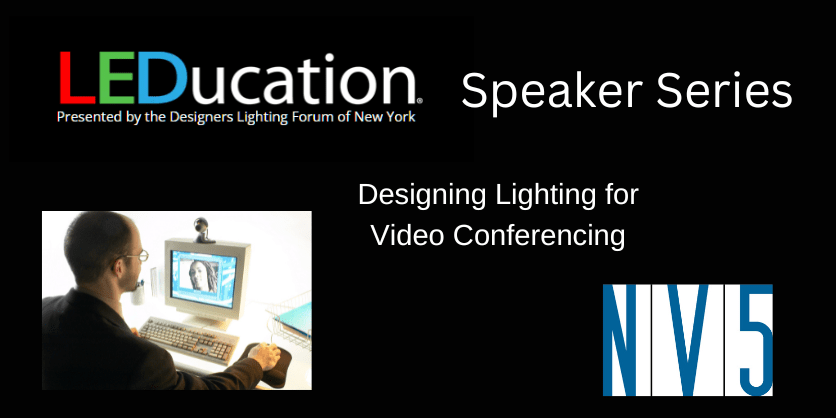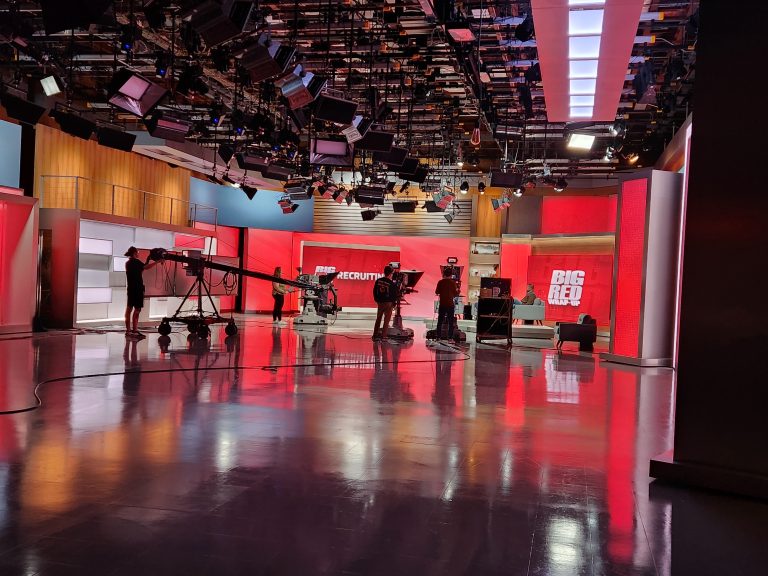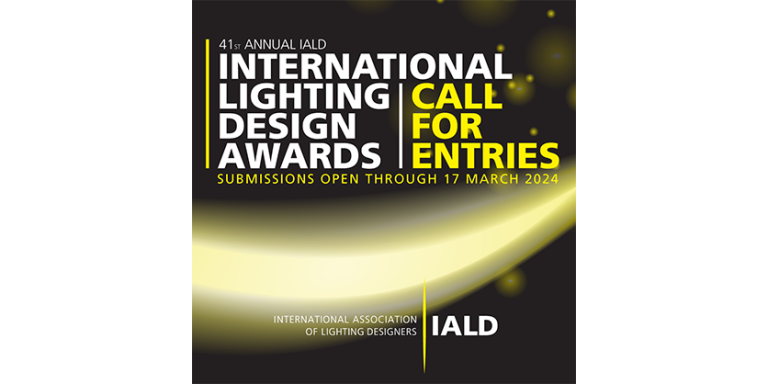LEDucation Speaker Series: Designing Lighting for Video Conferencing

© Richard D. Falconer, LC, IALD
In today’s business world, videoconferencing has become the norm to bring people together in the office and in remote locations. The primary advantages are productivity, flexibility, and cost-effectiveness.
Lighting design plays a pivotal role in creating an optimal environment that addresses technical AV requirements for video camera capture while maintaining a comfortable, glare-free experience for the participants. Thoughtful lighting design can positively impact ambiance, mood, and participant engagement.
Strategic lighting choices contribute to the effectiveness of presentations, and most importantly, clarity of video images with clear facial recognition, body language, and gestures that support non-verbal communication.
Why It Matters
The human eye and the eye-brain system is far superior to the best camera. Our eyes perceive an illuminated scene, and a complex eye-brain function resolves issues including low illuminance levels, a wide and variable depth of field, high contrast ratios, and multiple CCT values from different light sources. The video camera, however sophisticated it might be, is not as successful in resolving these challenges. Understanding how the camera can be assisted with strategic lighting choices results in production of high-quality video images.
We tend to think of illuminance in lux or footcandles when we are designing a lighting plan, but when we are designing for camera capture, we also need to think of luminance and light reflectance values (LRV) that the camera receives to create an image.
There are key principles for Video Conference Lighting that translate well from television. In both contexts, the goal is to ensure that the subject is illuminated in a way that allows the viewer to engage with them clearly and meaningfully.
Effective video lighting design boils down to the following principles:
• Understanding the space layout
• Contrast ratio
• Color temperature
• White balance
• Luminance vs. illuminance
• Vertical luminance
These principles are essential for ensuring that lighting supports both technical AV requirements and participant comfort.
A key similarity between video conferencing and professional lighting setups in television and film is the concept of “three-point lighting.” This technique involves three main light sources: a key light, a fill light, and a backlight.
The key light is the primary light source that illuminates the subject’s face, while the fill light softens shadows created by the key light. The backlight (or rim light) separates the subject from the background, adding depth and dimension. When applied to video conferencing, a simplified version of three-point lighting can greatly enhance the quality of the image. The key light can be positioned in front of the participant, slightly above eye level, to create an even, flattering illumination. A fill light can be used to soften any harsh shadows, and a backlight can help distinguish the subject from the background.
The use of lighting to control the perception of depth is another parallel between video conferencing and film production. In film, lighting is often used to create a sense of depth within a scene, highlighting important characters or objects and guiding the viewer’s eye. In a video conference, proper lighting can have a similar effect, helping to emphasize the speaker while ensuring that the background remains visually appealing but not distracting. A poorly lit background can make a video call feel cluttered and unprofessional, whereas a well-lit background can create a clean and tidy atmosphere that keeps the focus on the participant.
The professional quality of a video conference can be significantly enhanced through careful attention to lighting. Just as a filmmaker or television producer would go to great lengths to ensure that their actors are properly lit for a scene, individuals participating in video conferences should take the time to arrange their lighting setup thoughtfully. For business meetings, interviews, or presentations, good lighting conveys professionalism and demonstrates that the participant is prepared and attentive.
Additionally, effective lighting in video conferencing can help bridge the gap in communication that might otherwise exist in a virtual environment. Visual cues such as facial expressions, eye contact, and body language play a significant role in human communication. When lighting is properly arranged, these cues are clearer and more discernible, fostering better understanding between participants. In contrast, poor lighting can obscure these non-verbal cues, leading to misunderstandings or a sense of disengagement.
In both video conferencing and television, lighting serves a crucial role in visual communication. While video conferencing may not require the complex setups seen in film production, understanding the principles of lighting and applying them thoughtfully can make a significant difference in the quality and effectiveness of virtual communication.
Proper lighting, therefore, is not merely a technical concern; it is an essential element in ensuring that video conferencing serves its intended purpose—facilitating clear, meaningful, and professional communication.
About the author
Richard D. Falconer, LC, IALD, is Senior Lighting Designer, Technology & Acoustics at NV5, headquartered in Philadelphia. He will be covering this topic as a featured speaker at LEDucation this March in New York City. For more information about NV5, click here
Related articles
LEDucation 2025 Opens Registration, Releases Exhibitor List & Discounted Room Rates









